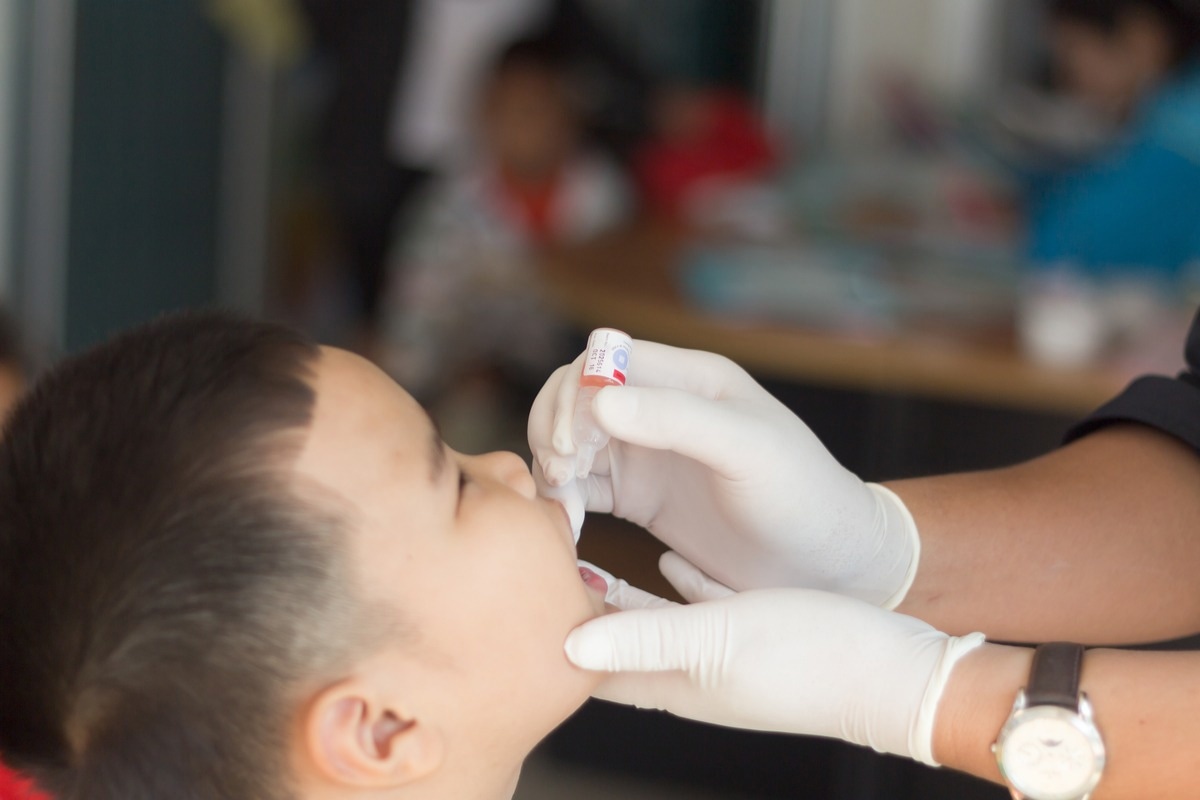In a recent study published in Frontiers in Immunology, researchers evaluated the impact of the oral poliovirus vaccine (OPV) on the incidence of coronavirus disease 2019 (COVID-19).
 Study: Vaccination With Oral Polio Vaccine Reduces COVID-19 Incidence. Image Credit: frank60/Shutterstock
Study: Vaccination With Oral Polio Vaccine Reduces COVID-19 Incidence. Image Credit: frank60/Shutterstock
Background
Rapid interventions during an emergent pandemic are critical to curbing the transmission of causal pathogens until vaccination is introduced. In light of the COVID-19 pandemic, several measures have been implemented to limit the spread of severe acute respiratory syndrome coronavirus 2 (SARS-CoV-2). These included physical distancing, masking, travel restrictions, national or regional lockdowns, etc. Although effective, these measures are temporary and disrupt economic and social activities; thus, achieving population immunity must be the ideal solution.
In this regard, vaccines against SARS-CoV-2 were developed in record time, given the exigency, and several vaccines were authorized for emergency use. Nonetheless, many challenges concerning global rollout emerged, particularly in low-income countries with poorly developed health infrastructure. The emergence of mutant variants of SARS-CoV-2, which exhibited substantial resistance to vaccine-induced immune responses, was another impediment.
Prior research suggests that live-attenuated vaccines (LAVs) induce broad protection against off-targets. This was observed for OPV, measles vaccine, and Bacillus Calmette-Guerin (BCG) vaccine, among others. One study showed that OPV reduced the incidence of influenza in the Soviet Union in the late 1960s. As such, it has been speculated that LAVs might confer a broad protective effect against SARS-CoV-2.
About the study
In the present study, researchers assessed the effect of vaccination with OPV on COVID-19 incidence. The study was conducted at the Kirov Medical University from May 14, 2020, to January 11, 2021. Participants aged 18 to 65 were eligible, provided they were healthy without any chronic conditions or abnormalities. Excluded participants were those with a history of COVID-19 infection, immunodeficiency, immunosuppression, malignant neoplasms, vaccine hypersensitivity, or other complications.
Eligible subjects were equally randomized to study/vaccine and placebo cohorts. Participants in the study cohort received a 0.2 ml dose of bivalent OPV 1 and 3, whereas placebo participants received sterilized distilled water. Blood samples were obtained from 20 placebo participants and 40 vaccinated participants on each visit.
Neutralizing antibodies (nAbs) against poliovirus were determined using a microneutralization assay. The primary study outcome was estimating the number of COVID-19 cases in each group within three months of OPV or placebo administration. COVID-19 cases were confirmed through polymerase chain reaction (PCR) or serological tests. Secondary outcomes of the study were the total number of acute respiratory infections (ARIs), such as common cold, influenza, etc., in each cohort, the severity and duration of illness, and deaths.
Findings
Overall, 558 and 557 participants were enrolled in the study and placebo cohorts. The questionnaire captured data on previous ARI history, revealing that participants in each cohort were often sick twice or once a year. No participant was vaccinated against SARS-CoV-2 before or during the study period. All participants were previously vaccinated against poliomyelitis. Sera samples obtained on visits 1 and 2 exhibited neutralizing activity against attenuated Sabin polioviruses.
At the start of the study, antibodies were detected in all subjects against at least two serotypes of poliovirus. Nevertheless, eight subjects (two from placebo and six from study cohorts) had no detectable nAb titers against type 3 poliovirus, suggesting waning protection against this serotype. At the second visit, i.e., after a month of vaccine/placebo administration, placebo participants showed no increase in nAb titers.
On the other hand, individuals from the study cohort showed a 16-fold increase in nAb titers against type 3 poliovirus and 5.6-fold against type 1 poliovirus. About 25 individuals from the study cohort were diagnosed with COVID-19 compared to 44 COVID-19 cases in the placebo group, which was statistically significant. This meant that COVID-19 incidence was 1.8-times lower in OPV-vaccinated subjects than in placebo recipients. Deaths were not recorded in either cohort.
Four COVID-19 cases were documented within a month of OPV administration compared to seven cases in the placebo cohort, albeit this difference was statistically insignificant given the fewer cases. Further, placebo recipients exhibited a 1.9-fold higher relative risk of contracting SARS-CoV-2 than OPV-vaccinated subjects during the first month.
ARI events were (self)-reported by 68 OPV-vaccinated subjects and 66 placebo recipients. ARI incidence was lower in vaccinated subjects than in placebo recipients; however, it was not statistically significant.
Conclusions
The findings revealed that COVID-19 incidence was lower among subjects vaccinated with OPV than those who received a placebo. Moreover, OPV-vaccinated individuals had a lower risk of contracting COVID-19 infection than placebo participants.
Notably, the frequency of SARS-CoV-2-positive PCR or serological tests among contacts of people with ARI or COVID-19 was higher in the placebo cohort than in vaccinated subjects. This suggested that OPV might confer resistance to SARS-CoV-2 infection. Nevertheless, more research is required to characterize the protective effects of vaccination with OPV or LAVs against SARS-CoV-2.